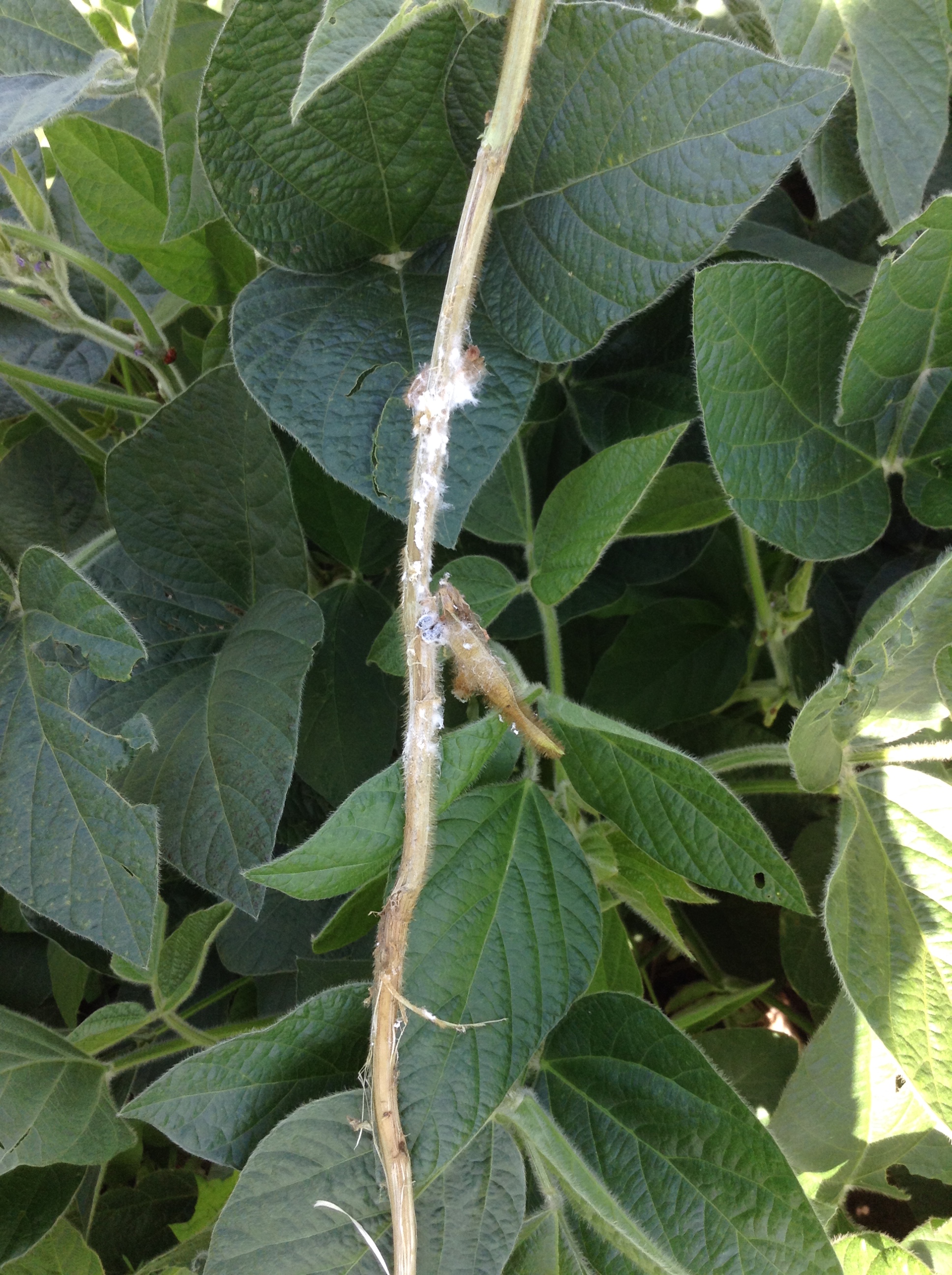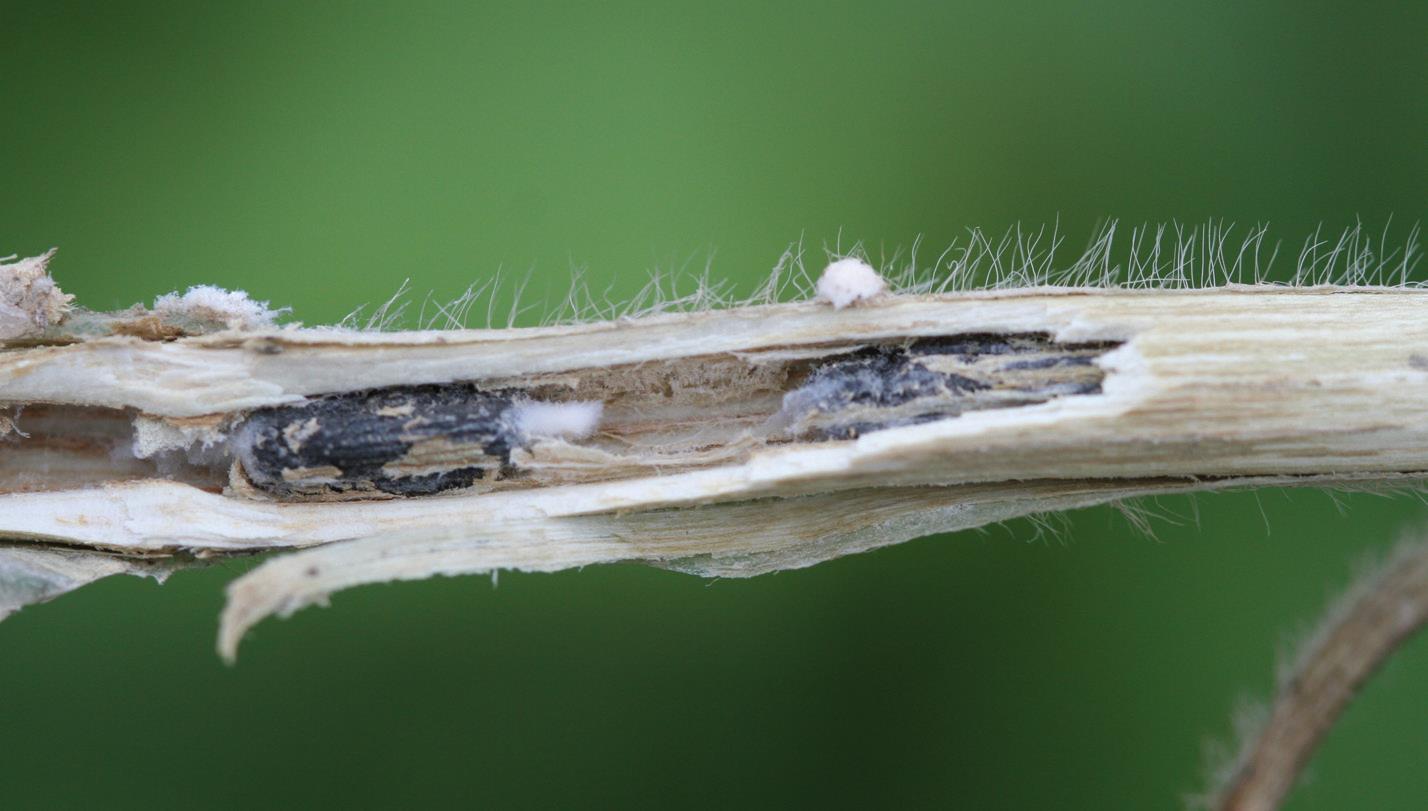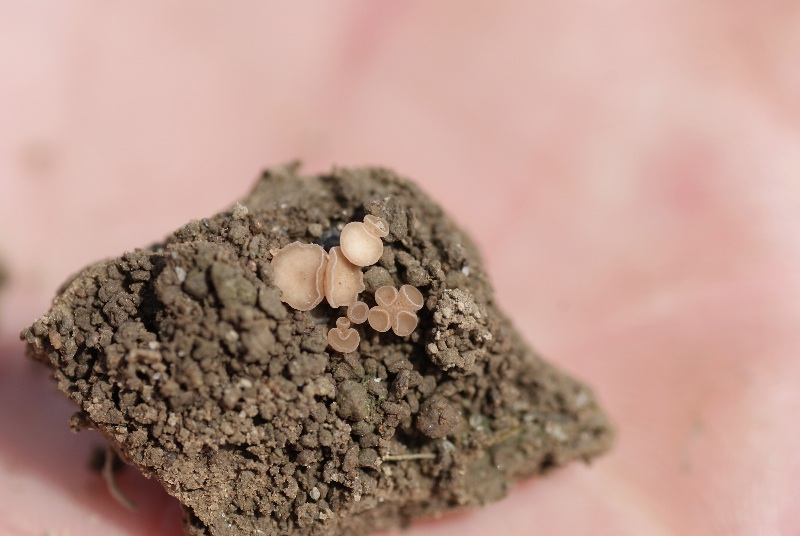By Anne Dorrance
White mold is caused by the fungus Sclerotinia sclerotiorum and it is favored by cool damp conditions. Remember those morning fogs this summer and the fact that you hardly used your air conditioner? Those are perfect conditions for infection.
 White mold on soybean stem. |
This fungus forms hard, black, irregular-shaped bodies called sclerotia. They are actually a mass of hyphae and if you break them open they will be pink inside. They can be mistaken for mice or rat droppings as well, but they’re a different color inside.
When the conditions are cool and the canopy is closed, this fungus produces a very small mushroom. This usually occurs during flowering and the spores then land on the dead flowers. This provides a perfect point of entry. This fungus produces oxalic acid, which degrades the tissue as it colonizes the plant.
The infections that you see now occurred 2 to 4 weeks ago. Symptoms from the road will look like standing plants with a gray-green appearance. Eventually these plants will lodge. Once the leaves fall off the plants will stand back up to some extent.
Some things to keep in mind:
 Sclerotia inside soybean stem. |
1. There is nothing to spray at this time to stop the infection. The plants that have stem lesions will die and that yield will be lost. The plants that lodge on top of one another, we have seen the mycelium keep colonizing the upper stems, “plant-to-plant.” But overall this will be minimal. Again, nothing can be sprayed on the plants at this time.
2. It takes at least 20% incidence to begin to measure yield loss. We have had several trials out over the past several years, and we can measure differences in disease severity/incidence — but in all cases we could not measure yield loss as we were at 15% to 20% incidence.
3. Not all fields have inoculum — there must be sclerotia in the field from a previous crop to have Sclerotinia develop — so farmers should note this field as they will now have this “forever.”
 Very small mushroom produced by fungus when conditions are cool and the canopy is closed. |
4. Make note of the variety and remove it from the list. There are more resistant varieties out there, but this year was VERY conducive for infection and we expect that some moderately resistant varieties are going to have a tough time. It’s a good year to get data and some of these varieties will be dumped.
5. Plan to harvest these fields last. The reason is the sclerotia will get everywhere in combines and then become introduced into more fields. Let’s keep the spread to a minimum.
6. After harvest, practice no-till. The sclerotia that are left on the surface will degrade more quickly than those that are buried.
7. For severely infested fields, we have tried fall applications of a biocontrol fungus called Contans. Interestingly, in subsequent years, we did not observe white mold developing, but we can’t be certain it was from the Contans or the fact that the environment was not favorable in the years that followed or if the varieties were more resistant. So we are sharing the information but not backing the practice.
8. Practice good weed management. This fungus has a very wide host range, including many weeds, alfalfa, and other legumes. So it’s best to plan for wheat or corn for the next crop.
9. Choose varieties with better resistance levels.






Post a comment
Report Abusive Comment